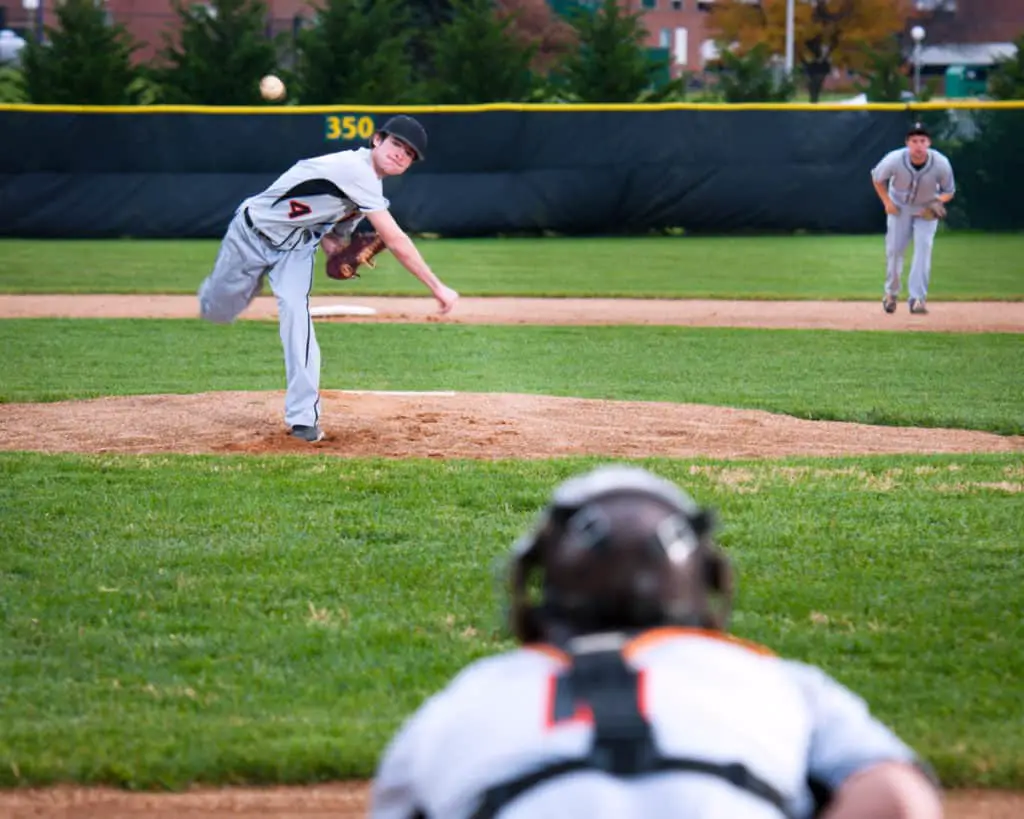While every position in baseball is important at certain times and requires certain skills, the catcher position is one of the most important positions in all of baseball.
It requires a special skill set different from every other position in baseball. It is the only position that requires someone to wear a face mask, skull cap, chest protector and shin guards to play the position.
The catcher is there in the heat of the battle, calling pitches, framing pitches, block baseballs thrown in the dirt, while trying to cut down base stealers on the bases. Sounds easy, right? It is maybe the most physically demanding position on the field.
So, where does it rank?
How Important Is The Catcher in Baseball?
In our rankings, we have it as the 2nd most important position in baseball, right behind the pitcher. The pitcher and catcher combination is essential and vital to the overall success of a baseball team. Without a quality catcher, the team has a weak spot that others teams will expose by stealing bases and keeping the pitcher off balance.
Complete ranking of baseball positions in order of importance can be found here!
Roles and Responsibilities That Makes the Catcher Important in Baseball
- Calling pitches
- Blocking baseballs in the dirt
- Controlling the running game

Role #1: Calling Pitches
The catcher must be aware of the strengths and weaknesses of both his pitcher and the batter at the plate. They must also take into consideration the strike zone of the umpire and decide the best pitch for that situation. Of course the pitcher can shake the catcher off, but the best catchers have a feel for the game and an idea of the scouting report to handle the game. The best catchers are often talked about for calling a great great. What that means is that they were able to keep the batters off balance and guessing on what pitch was coming next.
Role #2: Blocking Baseballs in the Dirt
When a pitcher can have the confidence that a catcher will block anything in the dirt, they have the freedom to really let a breaking ball go and try to get a big break on the ball. The pitch might look good to the batter and then come up short and in the dirt. The best catchers are able to smother the ball and knock it down, preventing a dropped third strike or maybe the runner on 3rd from scoring.
Role #3: Controlling the Running Game
The best catchers have a strong arm and a quick release with quality footwork. They are able to keep the fastest base runners from attempting to steal a base. Overall, when a catcher can have a quick release and a strong throw that is put in the perfect spot, many runners will not even attempt to steal a base. The opposite is also true. If the catcher is struggling, anyone with even decent speed might make an attempt to steal a base. Keeping runners on their base and keeping the force out in play is important to the defense. The impact he catcher has on the game is huge from the run game perspective.

What Makes A Good Catcher in Baseball?
The best catchers not only are great at the 3 roles above, but have a certain mindset that sets them apart from the rest of the baseball players. A great catcher will have the following traits:
- Toughness
- Commitment
- Leadership
- Smart
- Deceptiveness
#1: Toughness
The catcher is going to get beat up physically. Foul balls and pitches in the dirt bouncing off their body. They have to deal with extreme heat on some days or really cold weather on others. The overall bumps and bruises that occur over a 7 or 9 inning game are for real. Plus the catcher is constantly squatting and standing up and working hard to keep the pitcher mentally in the game.
#2: Commitment
Unless you are truly committed to your time and the journey to win as many games as possible, it is easy to lose focus and want to play a different position. Playing catcher can take away from your ability to hit your highest average possible at the plate due to the foul balls off your arms, hands or body. It takes the right mindset and commitment to be the catcher that your team needs!
#3: Leadership
The team will follow the leadership of the catcher. The catcher can help with defensive alignments, call pitchers and work the umpire all at the same time. One thing the catcher will be is bored. There is plenty to do and must work to keep the pitcher sharp and focused on the game.
#4: Smart
The catcher must understand the strengths and weaknesses of the pitcher and the hitter. He must also know the current strike zone of the umpire. Taking in all of this information, he will work hard to call a quality game to keep hitters off balance.
#5: Deceptiveness
A major part of playing catcher is working the umpire. You want to build a quality connection with the umpire and keep him or her safe. You also want to frame pitches to help out your pitchers and get every call possible without showing up the umpire. It takes a quality balance to work the umpire to help your team out!
Final Thoughts: How Important Is the Catcher in Baseball
By pure numbers, the amount of action a catcher is involved with compared to a corner outfielder is significant. The catcher is involved in every pitch, even inf he doesn’t end up catching the pitch, he called the pitch and was set up to give the pitcher a quality target. Chances are there will be a role for the catcher even on a batted ball, ethth
Helpful Resources
